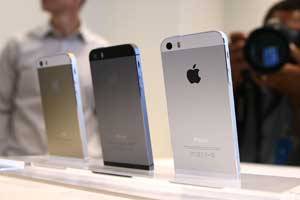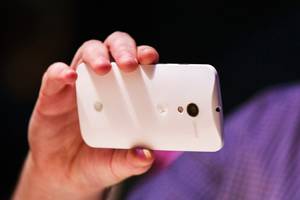It’s almost fall, which means tech companies are gearing up to release their newest smartphones, tablets, and wearable gadgets in time for the holiday season.
Most manufacturers haven’t even unveiled these devices yet, but we already have a pretty clear idea of what the most popular smartphones and tablets of 2015 will look like.
It’s important to keep in mind that these devices haven’t been confirmed yet, so there’s a chance that some of the phones and tablets on this list may not make it to market in 2014.
However, based on numerous rumours and leaks over the past few months, we feel strongly enough to include them in this list.
1. iPhone 6
Apple’s next smartphone, presumably called the iPhone 6, is probably the most anticipated gadget of 2014. The phone is expected to come out at the end of September, and Apple will reportedly unveil it on September 9.
Based on various leaks and rumours, it seems like the iPhone 6 be a noticeable upgrade from the iPhone 5s. The iPhone 6 will reportedly come with a larger, sharper 4.7-inch screen and a completely new design that looks similar to the iPad Air than an iPhone.
2. An even larger 5.5-inch iPhone
It’s been widely reported that Apple will unveil two new smartphones this year – one with a 4.7-inch display and another with a 5.5-inch screen. It’s unclear if they’ll both launch at the same time, however. Some reports have indicated that Apple has run into production issues with the 5.5-inch iPhone, hinting that it could be released in late 2014 or early 2015.
3. Samsung Galaxy Note 4
Samsung is reportedly getting ready to unveil its new Galaxy Note smartphone in early September. Like the Galaxy Note 3, the Note 4 is expected to come with a giant 5.7-inch display.
We wouldn’t be surprised to see a Galaxy Note 4 that looks like a giant version of the Galaxy S5, which means it could come with the same dimpled back and a heart rate monitor. We won’t know for sure until Samsung makes an official announcement, which is expected to happen on September 3.
4. Google Nexus 6 (or Nexus X)
Google is also reportedly preparing to release a new smartphone this fall. A report from TKTechNews suggests that it could launch in September, and that Google may call it the Nexus X rather than using its traditional numbered naming convention. Google’s new Nexus phone is expected to be more premium than the company’s previous Nexus phones.
It may cost somewhere in the $499.99 (Rs 30,000 approximately) range (unlocked) compared to the $349 Nexus 5. Naturally, it’ll ship with Android L and is rumoured to feature a 13MP camera, a 2K display, and a Qualcomm Snapdragon 805 processor.
5. Moto X+1:
There’s a strong chance that Motorola’s next flagship smartphone, presumably the Moto X+1, will debut in September. The company is holding an event on September 4, where it’s expected to officially take the wraps off its new phone and a few other gadgets, too. The Moto X+1 is expected to come with a larger, sharper display than the Moto X, a faster processor, and a dual-flash camera.
6. Second-generation iPad Air
In years past, Apple has unveiled its new iPads in October, leading many to believe that an update to the iPad line is coming this fall, too. We haven’t heard too much about the second-gen iPad Air, but a report from Korean news source ET News suggests Apple may already be working on its components.
If the report holds up to be true, we could expect to see a new iPad with the same design as the first Air, a faster processor than Apple’s current tablet, and a better camera. French blog Nowhereelse.fr also posted a leaked image that claims to show the ipad Air 2.
7. A new Nexus tablet from Google :
Google is also rumoured to be working on a new gadget with HTC, and many believe this will be Google’s new Nexus tablet. From what we’ve heard, it sounds like this new device will be a tablet version of HTC’s One smartphone.
Codenamed “Volantis,” the tablet is expected to come with a super sharp display, HTC’s aluminium design that’s become the staple of its new smartphones, and Android L right out of the box. There’s no word on when it will come out, but Google has previously unveiled its new Nexus hardware in the fall.
8. Apple’s iWatch
Apple has been rumoured to be working on its first wearable device for more than a year, and a report from Re/code suggests it could finally debut this October. The iWatch is expected to focus on fitness, and will supposedly be able to track the number of steps you take, how many calories you’ve burned, and your heart rate, among other information.
If Apple does unveil the iWatch in October, we can probably expect to see it go on sale by the end of the year.
9. Moto 360
Motorola’s Moto 360 is one of the first devices to use Google’s new software for wearables, Android Wear. It made headlines back in March when Motorola unveiled it thanks to its circular design, which is unusual for a smartwatch with a touchscreen.
The Moto 360 is water-resistant and supports wireless charging. There’s no word on how much it costs yet, but Motorola is expected to unveil more details about availability on September 4. Rumours suggest it will retail for about $250.











